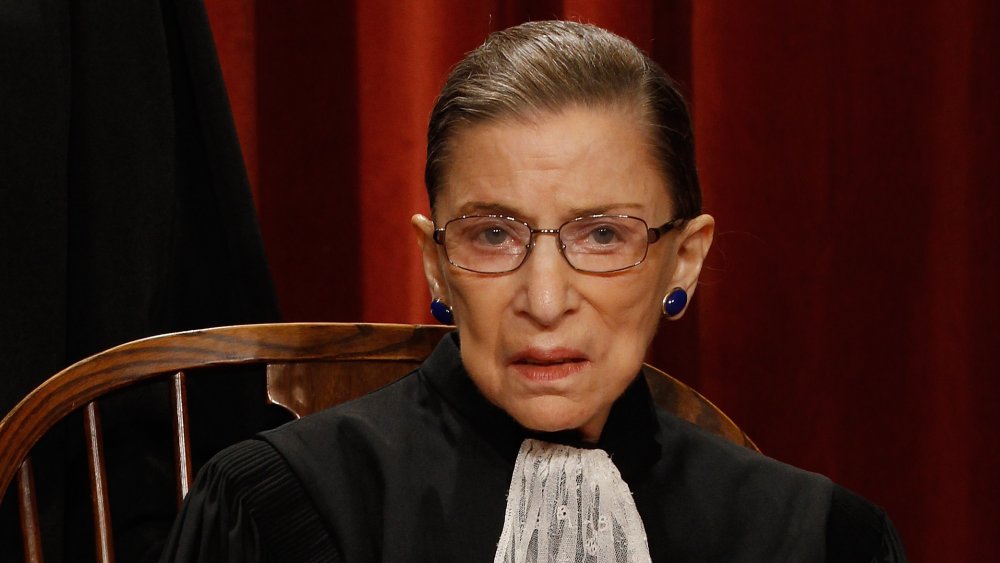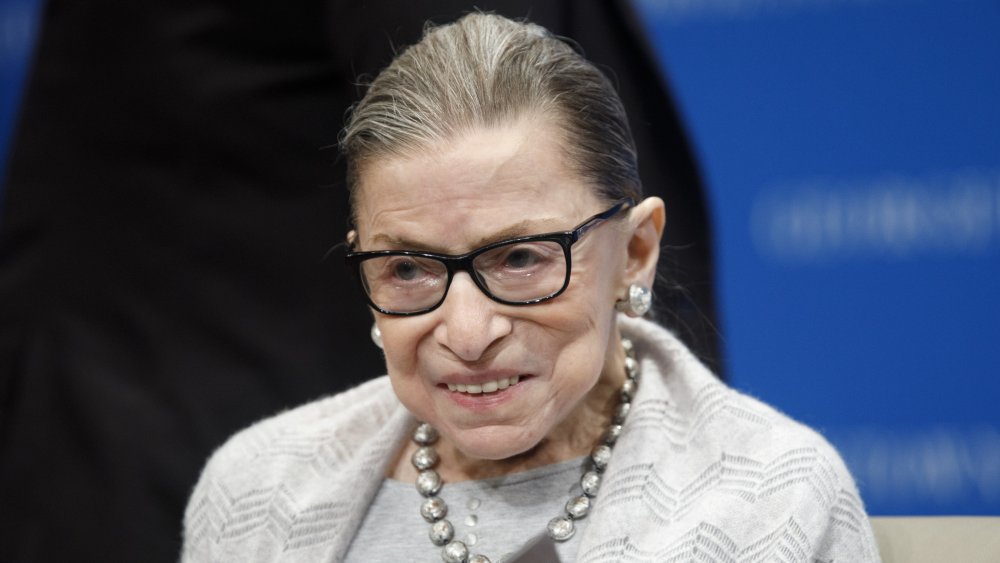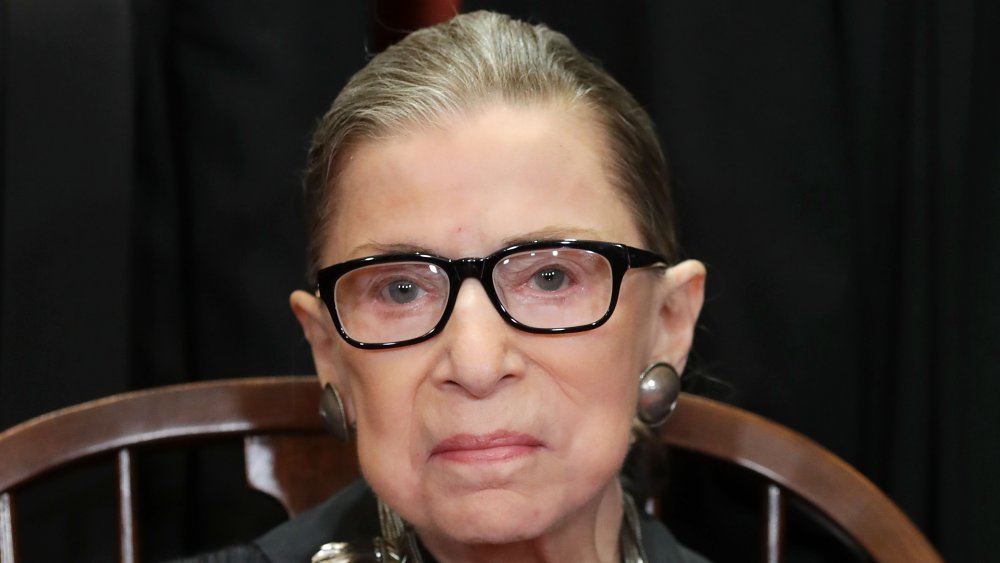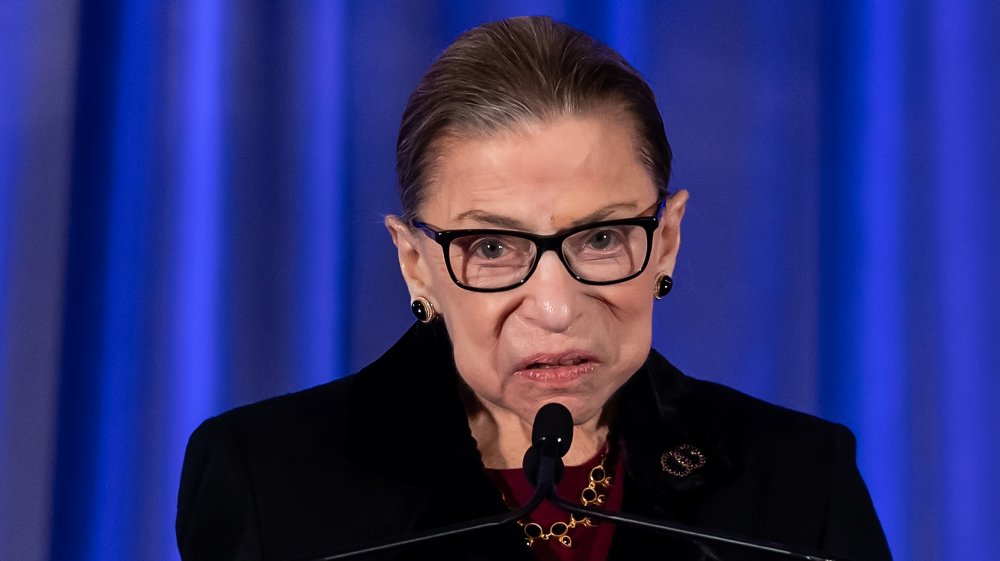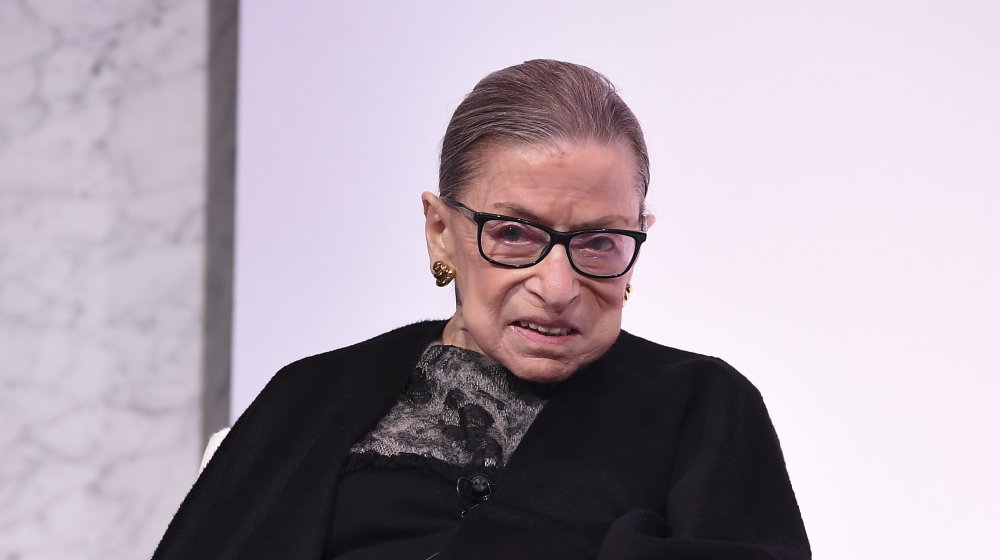Ruth Bader Ginsburg: What You Don't Know About The Supreme Court Justice
Ruth Bader Ginsburg is iconic. The longtime Supreme Court justice isn't just popular with those who follow politics — she's also a feminist role model and an inspiration to people all over the world.
Born on March 15, 1933, Ginsburg's brilliance was apparent from a young age (per Biography). Ginsburg grew up in a working class family in Brooklyn, and was encouraged to get an education by her parents — especially her mother, who hadn't been able to go to college. Ginsburg's father, an immigrant from Russia who "never had any formal education except Hebrew school," also wanted his daughter to explore her potential. "Education was tremendously important to them," she explained to Bill Moyers on his podcast, Moyers On Democracy. "And I grew up learning to love to read. My fondest memories as a child were sitting on my mother's lap while she read to me."
The support from her family, combined with her love of learning, would result in Ginsburg becoming the second female Supreme Court justice in history.
Ruth Bader Ginsburg proved that women can have it all
Making Ginsburg's scholastic and career achievements more impressive is that she accomplished them while married and with a baby. In a time when women were expected to focus on their families, Ginsburg proved that you can have it all. Per Biography, Ginsburg married her husband, Martin D. Ginsburg in 1954 — the same year she graduated first in her class from Cornell University. She was 21. Their daughter, Jane, was born not long after.
Ginsburg's husband was drafted into the military that year, serving for two years. After he returned, both husband and wife went to Harvard Law School (Ginsburg would later transfer to Columbia). Ginsburg not only focused on her studies and her family in school, but also helped her husband win a fight against testicular cancer in 1956.
"I had no time to waste, because Jane was 14 months when I started," Ginsburg told Slate. "So my time was used very efficiently, for classes, for studying after class, then come home at 4 p.m. to take care of Jane. I didn't have time for any socializing, except on weekends."
Ruth Bader Ginsburg had a hard time finding a job after law school
Ginsburg graduated from Columbia Law School in 1959, a time when very few women became lawyers. Her success was far from automatic — she had to fight sexism at seemingly every turn.
In spite of the fact that she graduated at the top of her class, she had trouble finding a job. As she once explained in a speech (via GW Today) the fact that she was Jewish, a woman, and a mother meant that no one wanted to hire her. "I had three strikes against me," she said.
After being unable to find a job in an NYC law firm (per NPR), Ginsburg clerked for a U.S. District Court judge and then worked on a project on civil procedure. In 1963, she began to teach at Rutgers Law School, unaware of how her career would take off a few years later. "Then the women's movement came alive at the end of the '60s... there I was, a law school professor with time that I could devote to moving along this change," she said.
Ruth Bader Ginsburg was instrumental in the fight for gender equality
In the 1970s, Ginsburg became the director of the American Civil Liberties Union's Women's Rights Project. As part of her job, she fought for gender equality in front of the U.S. Supreme Court. As noted by the ACLU itself, the cases Ginsburg worked on "established the foundation for the current legal prohibitions against sex discrimination in this country and helped lay the groundwork for future women's rights advocacy."
Things have come a long way in Ginsburg's lifetime, in no small part due to Ginsburg herself. The Supreme Court justice is confident that the change she has seen in her lifetime is permanent. "I don't think there's going to be any turning back to old ways," she told NPR. "When you think about — the world has changed really in what women are doing. I went to law school when women were less than 3% of lawyers in the country; today, they are 50%. I never had a woman teacher in college or in law school. The changes have been enormous. And they've just — they've gone much too far [to be] going back."
Ruth Bader Ginsburg has no plans to retire
While Ginsburg has certainly accomplished a lot for one lifetime, she knows there is still work to be done and she plans to keep doing it. The Supreme Court justice has no plans of retiring in the foreseeable future. In July 2020, she said in a statement (via BBC News) that, in spite of undergoing "a course of chemotherapy to treat a recurrence of cancer," she will not be stepping down from the Supreme Court.
"The chemotherapy course... is yielding positive results," she said. "My most recent scan on 7 July indicated [a] significant reduction of the liver lesions and no new disease. I am tolerating chemotherapy well and am encouraged by the success of my current treatment. I will continue bi-weekly chemotherapy to keep my cancer at bay."
Ginsburg added, "I have often said I would remain a member of the Court as long as I can do the job full steam. I remain fully able to do that."
